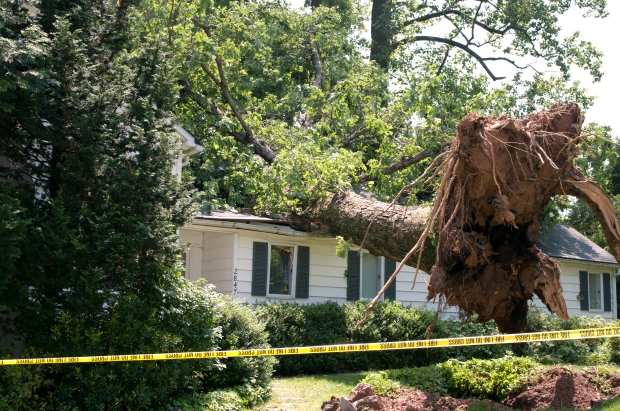Cutting Vs. Uprooting Trees: What To Do?
There are times when the decision whether to cut a tree down or not is made for you. This is usually after a severe storm which has caused damage; causing the tree to be unsafe.
But, unless the tree has fallen, you’ll still be faced with the decision to either cut the tree down or to uproot it.
Cutting The Tree Down
This is as simple as it sounds. It’s best to use a professional service such as High Point Trees.
You’ll need to cut a V in the tree; this will dictate the direction it will fall in. The next step is to cut the tree towards the V; making sure you are well out of the way of the path the tree should fall in.
It’s essential to use blocks to hold the cut open; this will prevent the cut from closing up as you go through the tree. A cut that closes up will pinch the blade of your chainsaw; preventing it from working correctly and potentially causing an injury.
Uprooting The Tree
Uprooting a tree means digging around the tree and down to remove the tree with its roots attached. If the tree is small, you should be able to do this by hand with a shovel.
Of course, larger trees will probably need machines to dig the tree out and then lift it. The alternative is to cut the tree down in sections first and then focus on removing the root.
Which Option Is Best?
The decision regarding which option is best can sometimes be made for you. For example, if you wish to move a tree, then you’ll need to uproot it and carefully transfer it to the new location. Cutting it down will just not be an option in this instance.
Another option when uprooting is the right choice is when you need to keep the space clear. Cutting down a tree will leave the root sticking out of the ground; if this is the only obstacle on a large lawn area, you’ll want to eradicate the root to allow you to flatten the area.
Cutting the tree down is usually considered a better option when the uprooting is likely to cause damage to surrounding property or even people. Although uprooting should be controlled and allow the tree to be lifted and removed this can go wrong; leaving the tree free to fall and cause damage.
If you’re planning on merely getting rid of the tree, then it makes more sense to cut it down. You can do this in sections to minimize the risk to the surrounding area.
Another time when cutting is best is when you realize that your tree has a disease or is ready to fall. In short, if you don’t need to save the tree to be used again, then it is better to cut it down as you can do this in sections safely.
Are you ready for some seriously stunning DIY projects to complement your beautifully landscaped yard? If you’re planning to remove any dead or dying trees, or just hoping to thin out the foliage, save a section of a fat, sturdy trunk to make outdoor stools.
Slice a few cross-sections, then sand and stain them. Click here to learn about this and other DIY projects for your yard.






